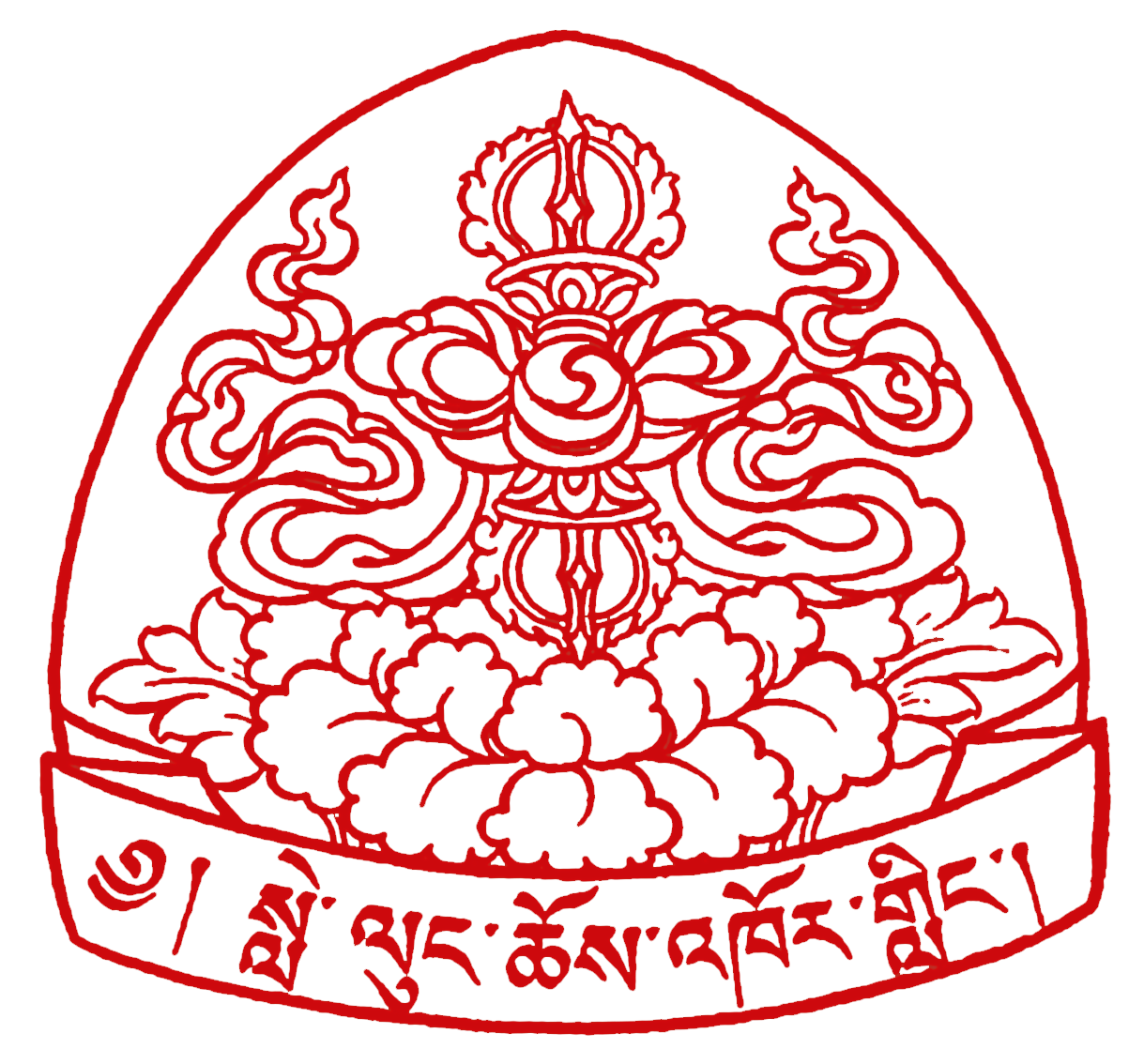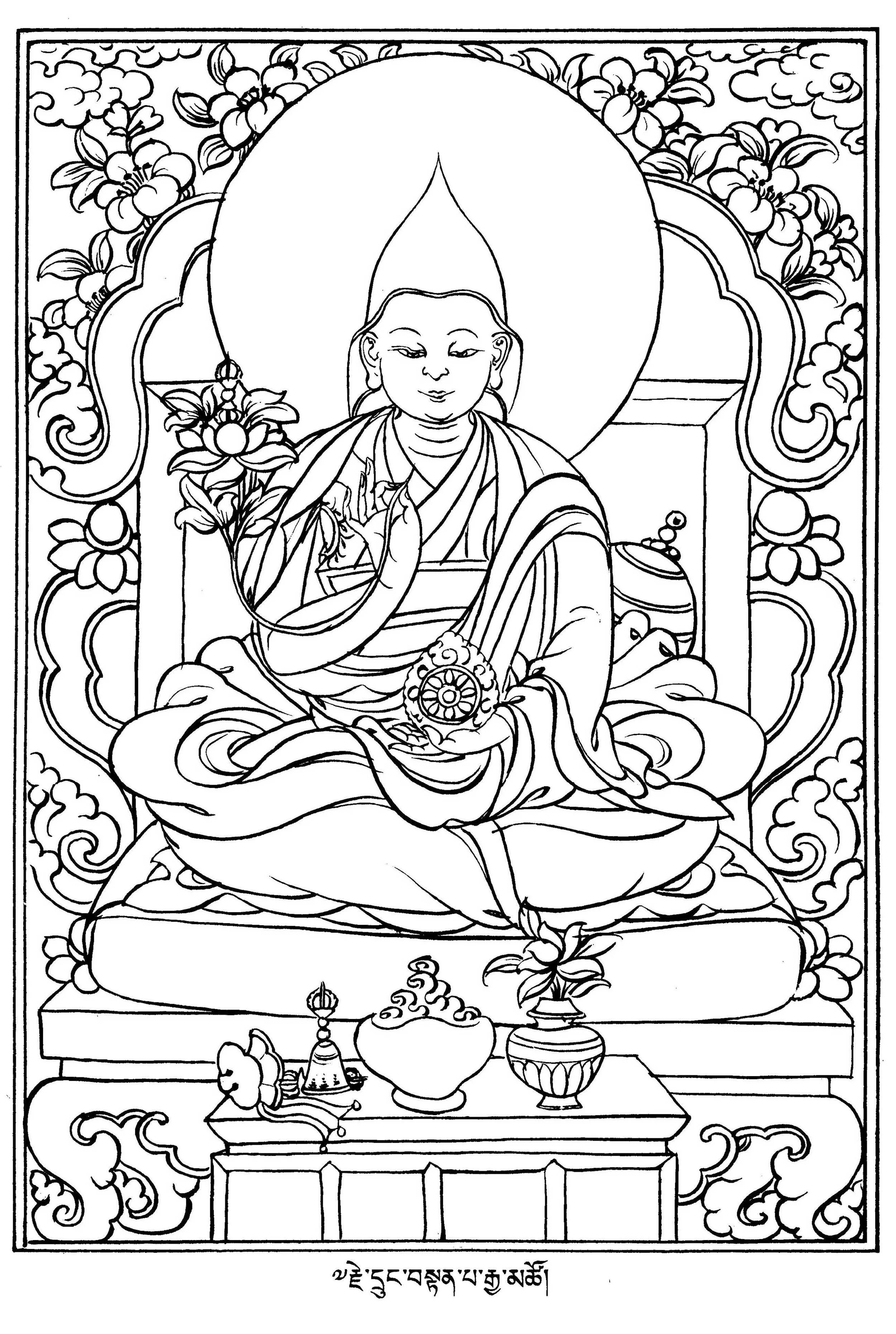THE LELUNG INCARNATIONS
The previous incarnations of Lelung Rinpoche, also known as Jedrung Tulkus, have played an important role in the history of Tibet and especially in the development of Buddhism.
The previous incarnations of Lelung Rinpoche, also known as Jedrung Tulkus, have played an important role in the history of Tibet and especially in the development of Buddhism. The lineage of Jedrung Tulkus began with the great master adept Lhodrag Namkha Gyaltsen whose direct disciples included the master Je Tsongkhapa, founder of the Gelungpa school of Tibetan Buddhism.
All of the subsequent Lelung incarnations are recognised as a manifestation of one of the Three Principal Incarnations of Tibet (Pokyi Tulku Nam Sum). Avalokitesvara, Manjushri and Vajrapani are the three principal bodhisattvas and Lelung Rinpoche is considered to be the representative incarnation of Vajrapani. The other two representatives incarnations are H.E. Wen Gyalse and H.E. Lo Sempa.
Vajrapani
Geshe Potowa
The second Lelung Rinpoche, Jedrung Gendhum Teahi, became the principal teacher of the third Dalai Lama. The third Lelung, Jedrung Tenpa Gyatso, was invited to Mongolia in 1584 and was requested to give teachings to the king. He later received an invitation to travel to Peking and the 14th Emperor of the Ming Dynasty,Wan Lee, also requested teachings from him. When he returned to Tibet, he became the teacher of the fourth Dalai Lama and the Panchen Lama, Panchen Logsang Chogyen.
The fifth Lelung, Jedrun Lobsang Trinley also known as Lelung Zhepai Dorje was born in 1697. He was a great treasure discoverer (tertön) and gave teachings to many masters of all traditions of Tibetan Buddhism. He had many monasteries and nunneries built during his lifetime, one of which was the renowned Ris med Thekchog Namdroling Monastery.
According to the cultural history of Buddhism, the infinite emantation Buddha manifested as Avalokitesvara to tame male beings, Khandro Sangwa Yeshe to tame female beings and Hayagriva to tame wrathful beings. The teachings of Khandro Sangwa Yeshe were bestowed upon King Trisongdetsun, Khadro Yeshe Tsogyal and the great translator Vairocana by Padmasambhava and were later hidden in the secret places of Tibet.
When the time was right, the teachings were revealed by the great tertön Mingling Choje Terdak Lingpa. It was prophesied by Guru Padmasambhava that Lelung Zhepai Dorje would be the lineage holder of this great treasure of Secret Exalted Wisdom Dharma (gSang wa Yesh es kyi chos ‘khor), which would greatly benefit many sentient beings during this degenerate age. The wheel of this cycle of teaching was turned throughout Tibet and the great adept, the Fifth Lelung Rinpoche, compiled teachings into sixteen volumes.
1st Lelung Rinpoche
The first Lelung, Namkha Gyaltsen (1326-1401), was instrumental in empowering Tsong Khapa's huge renaissance in Tibet. His biography shows that he was already a highly developed bodhisattva, an actual manifestation of the bodhisattva Vajrapani, considered the emanation of Vajradhara Buddha, born to collect and guard all Tantric teachings. In the Tibetan tradition, he may be considered the reincarnation of the enlightened soul-continuum of the famous Kadampa Geshe Potowa, a direct disciple of Dromtonpa.
2nd Lelung Rinpoche
The Second Lelung Jedrung incarnation, Gedun Tashi, appeared after 85 years in 1486. He also had a very distinguished life, becoming a heart disciple of His Holiness, the Second Dalai Lama, Gendun Gyatso (1475-1542). Once matured and realised, he was entrusted with prodigious tasks in developing monasteries in the Flower Valley where Gendun Gyatso had constructed the Choekhorgyal monastery, near the "Soul lake" (gLatso) of the powerful protector goddess, Palden Lhamo. He subsequently became an important teacher of His Holiness Sonam Gyatso (1543-1588), the Third Dalai Lama, transmitting key teachings of all the Unexcelled Yoga Tantras as well as super-secret teachings of various
powerful protectors, such as Mahakala. Gendun Tashi, though a member of the "New Kadampa," Gandenpa, or Gelukpa order, was very much involved in the nonsectarian study and teachings of the Nyingma order. He shared these interests and practices with both the Second and Third Dalai Lamas. He passed away from his body into the clear light in 1559.
3rd Lelung Rinpoche
The Third Lelung Jedrung Rinpoche was Tenpa Gyatso, born in 1560. Recognized at the age of three by the Third Dalai Lama, Sonam Gyatso, he was installed as a youth in Choekhorgyal and also at Jamba Ling in Chamdo. He received all the heart teachings of his own previous incarnation from the Third Dalai Lama Sonam Gyatso. In his twenties, he accompanied Sonam Gyatso to Mongolia to the momentous meeting with Altan Khan, the ruler of Genghis Khan's Central Asian empire.
Sonam Gyatso converted Altan Khan to Buddhism, and was in turn given the Mongolian name. “Dalai Lama” ("Dalai" being Mongolian for Tibetan "Gyatso," "ocean"). The emperor felt the "Presence" (Kundun) of Sonam Gyatso as being just like an ocean of compassionate bliss. The Third Lelung Jedrung, Tenpa Gyatso, was then sent by Sonam Gyatso to the Wanli Emperor (1563-1620) of China's Ming dynasty (Altan Khan refused to let Sonam Gyatso himself accept the Chinese invitation). There the Third Lelung Jedrung became the emperor's root guru, and in return was laden with offering gifts he brought back to Tibet to further the Third Dalai Lama's works.
Around the same time, the Lelung Rinpoche became the root guru of Panchen Losang Choekyi Gyaltsen (1570-1662), the very important Fourth Panchen Lama, the key figure in teaching and supporting the Great Fifth Dalai Lama (1617-1682). The Fourth Panchen Lama wrote of him as follows:
You do not merely masquerade as a learned master,
You are free of the artifice of a phony realized master
Your holy conduct is worthy of praise from the holy
Therefore your qualities are reflected in the clear pool of my mind!
Finally, Tenpa Gyatso served as an important teacher of the young Mongolian Fourth Dalai Lama, Yonten Gyatso (1589-1617), before he "manifested the appearance of dissolving his body and mind into the
sphere of ultimate reality"- as the traditional expression goes-in 1625. This Lelung Jedrung Rinpoche served two Dalai Lamas, a Panchen Lama, thousands of disciples, as well as a Chinese emperor.
4th Lelung Rinpoche
The following is placeholder text known as “lorem ipsum,” which is scrambled Latin used by designers to mimic real copy. Vestibulum ante ipsum primis in faucibus orci luctus et ultrices posuere cubilia Curae. Mauris id fermentum nulla. Donec eget risus diam.
5th Lelung Rinpoche
The following is placeholder text known as “lorem ipsum,” which is scrambled Latin used by designers to mimic real copy. Vestibulum ante ipsum primis in faucibus orci luctus et ultrices posuere cubilia Curae. Mauris id fermentum nulla. Donec eget risus diam.
6th Lelung RInpoche
The following is placeholder text known as “lorem ipsum,” which is scrambled Latin used by designers to mimic real copy. Vestibulum ante ipsum primis in faucibus orci luctus et ultrices posuere cubilia Curae. Mauris id fermentum nulla. Donec eget risus diam.
7th Lelung Rinpoche
The following is placeholder text known as “lorem ipsum,” which is scrambled Latin used by designers to mimic real copy. Nulla eu pretium massa. Vivamus sit amet semper lacus, in mollis libero. Donec eget risus diam. Quisque congue porttitor ullamcorper.
8th Lelung Rinpoche
The following is placeholder text known as “lorem ipsum,” which is scrambled Latin used by designers to mimic real copy. Nulla eu pretium massa. Vivamus sit amet semper lacus, in mollis libero. Donec eget risus diam. Quisque congue porttitor ullamcorper.
9th Lelung Rinpoche
The following is placeholder text known as “lorem ipsum,” which is scrambled Latin used by designers to mimic real copy. Sed a ligula quis sapien lacinia egestas. Nulla eu pretium massa. Phasellus sodales massa malesuada tellus fringilla, nec bibendum tellus blandit. Donec eget risus diam. Quisque congue porttitor ullamcorper.
10th Lelung Rinpoche
The following is placeholder text known as “lorem ipsum,” which is scrambled Latin used by designers to mimic real copy. Nulla eu pretium massa. Vivamus sit amet semper lacus, in mollis libero. Donec eget risus diam. Quisque congue porttitor ullamcorper.












